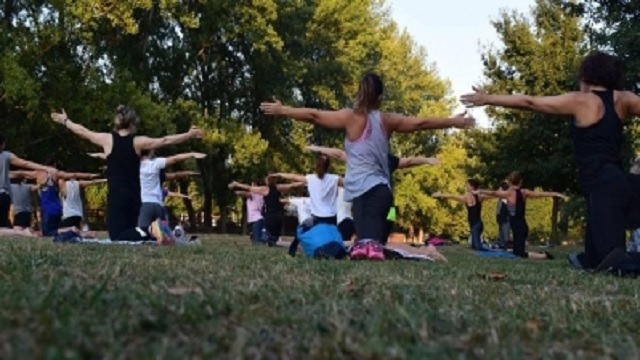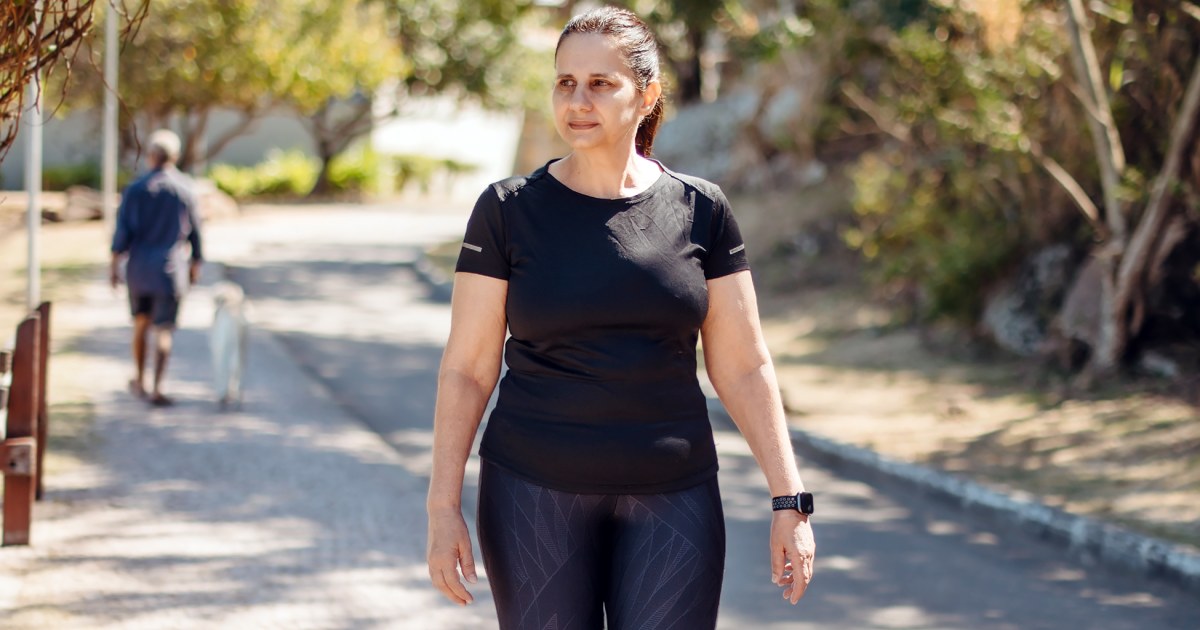Every January, millions of people make New Year’s resolutions lose weight or eat healthier, if not both. To achieve this goal, many people will start intense exercise programs too soon that incorporate too much exercise, resulting in physical exhaustion or injury. Overtraining can actually prevent you from losing weight.
As a health neuroscientist, I have studied the brain and cognitive mechanisms underlying eating behaviors and the role exercise has played in helping people improve their diets for over 10 years.
Energy and exercise
The Truth Is You Just Can’t Exercise a poor diet and expect to lose weight (if that is your goal). Humans are very good at conserving energy and will account for any calories burned through exercise by consuming more calories later in the day or being less physically active throughout the day.
That being said, you can and should exercise to help you lose weight and maintain your weightloss. But not to compensate for the calories consumed.
If you’re looking to lose weight, the only way to do it is to control your calorie intake. The best and most effective way to do this is to limit the consumption of ultra-processed foods, typical junk foods, and fast food meals. Even if you’re not looking to lose weight, cutting down on ultra-processed foods is good for you. mental and physical health.
Regular exercise makes this task easier by improving the brain and cognitive processes that help us regulate junk food intake and reducing stress. And the best part is that 20 minutes of brisk walking is enough to get the beneficial effects.
Why we overeat junk food
We know we shouldn’t overeat candy, cookies, cakes and crisps, or drink sugary sodas. Diets rich in these ultra-processed foods make us gain weight. But they are so hard to resist.
Ultra-processed junk food was designed to be as tasty and rewarding as possible. When we are exposed to media advertisements or actual food products (eg, chocolate bars in grocery store checkouts), brain activity in regions associated with reward processing increases. This reward-related brain activity leads to an increase cravings and the desire to eat, even when we are not hungry.
A region of the brain known as the dorsolateral prefrontal cortex (dlPFC) helps us limit the consumption of ultra-processed foods both by decreasing activity in these reward regions to reduce food cravings and by initiating cognitive processes necessary to exercise conscious control over food choices.
When using functional brain imaging to examine brain responses, neuroscientists have shown that increased activity in the dlPFC helps us control food cravings and select healthier foods by decreasing activity in areas brain reward. Conversely, when dlPFC activity is reduced, we find it harder to resist the temptation of appealing junk food and we will consume more snack foods.
Exercise can help regulate food intake
Exercise stimulates brain plasticity, which is the ability of the brain to adapt its functions based on new inputs. Stimulating brain plasticity makes it easier to change our habits and lifestyle. A growing body of evidence has shown that regular physical activity can increase prefrontal brain function and improve cognition.
These exercise-induced increases in prefrontal brain function and cognition make it easier to regulate or limit our intake of junk food. And we can see the effects with as little as 20 minutes of moderate-intensity exercise.
I have shown that people consume less ultra-processed foods such as crisps or milk chocolate after 20 minutes of moderate-intensity exercise (in our study, it was a brisk walk at 5 ,6-6.1 kilometers per hour on a treadmill with a slight incline) . Research has also shown that a single high-intensity interval training session and a 12-week high-intensity workout Aerobic exercise program may reduce preferences or appetite for high calorie junk food. Similar effects are seen when people engage in moderate aerobic exercise or weight training.
The key takeaway here is that regular exercise can reduce what people want junk food and improve their ability to resist the temptation of these enticing foods by improving brain function and cognition. This makes it easier to limit the consumption of these foods to achieve healthier eating and weight loss goals.
Exercise also helps reduce stress
When people are stressed, the body releases a hormone called cortisol, which activates what is called the fight or flight response. When cortisol levels are high, the brain thinks it needs more fuel, leading to increased cravings for ultra-processed sweet or salty foods.
Participation in regular exercise or just one exercise session reduces perceived stress levels and cortisol levels. Exercise also helps reduce the consumption of unhealthy foods and beverages when people are stressed.
Stress can also impact brain function. Research has shown that stress can lead to decreased activity in the prefrontal cortex and increased activity in reward regions of the brain when looking at pictures of food. This makes it harder to resist the temptation of appealing junk food.
By offsetting the impact of stress on prefrontal brain function, exercise makes it easier to maintain your healthier eating or junk food reduction goals. Twenty minutes of brisk walking can help the prefrontal cortex recover from temporary changes in activity, such as those seen when people are stressed.
The next time you’re feeling stressed, try taking a brisk 20-minute walk. This could prevent you from eating under stress.
Which exercise is the best?
Researchers are often asked what is the best exercise and how much exercise to do.
Ultimately, the best exercise is the one you enjoy and can sustain over time. High-intensity interval training (HIIT), aerobic exercise, meditation and mindfulness, yoga, and strength training are all effective in helping improve nutrition by targeting prefrontal brain function and reducing stress. .
If you’re starting a new exercise routine this New Year, do it slowly, be kind to yourself, listen to your body, and remember that a little is enough.
📣 For more lifestyle news, follow us on instagram | Twitter | Facebook and don’t miss the latest updates!
 AD Roberts
AD Roberts



